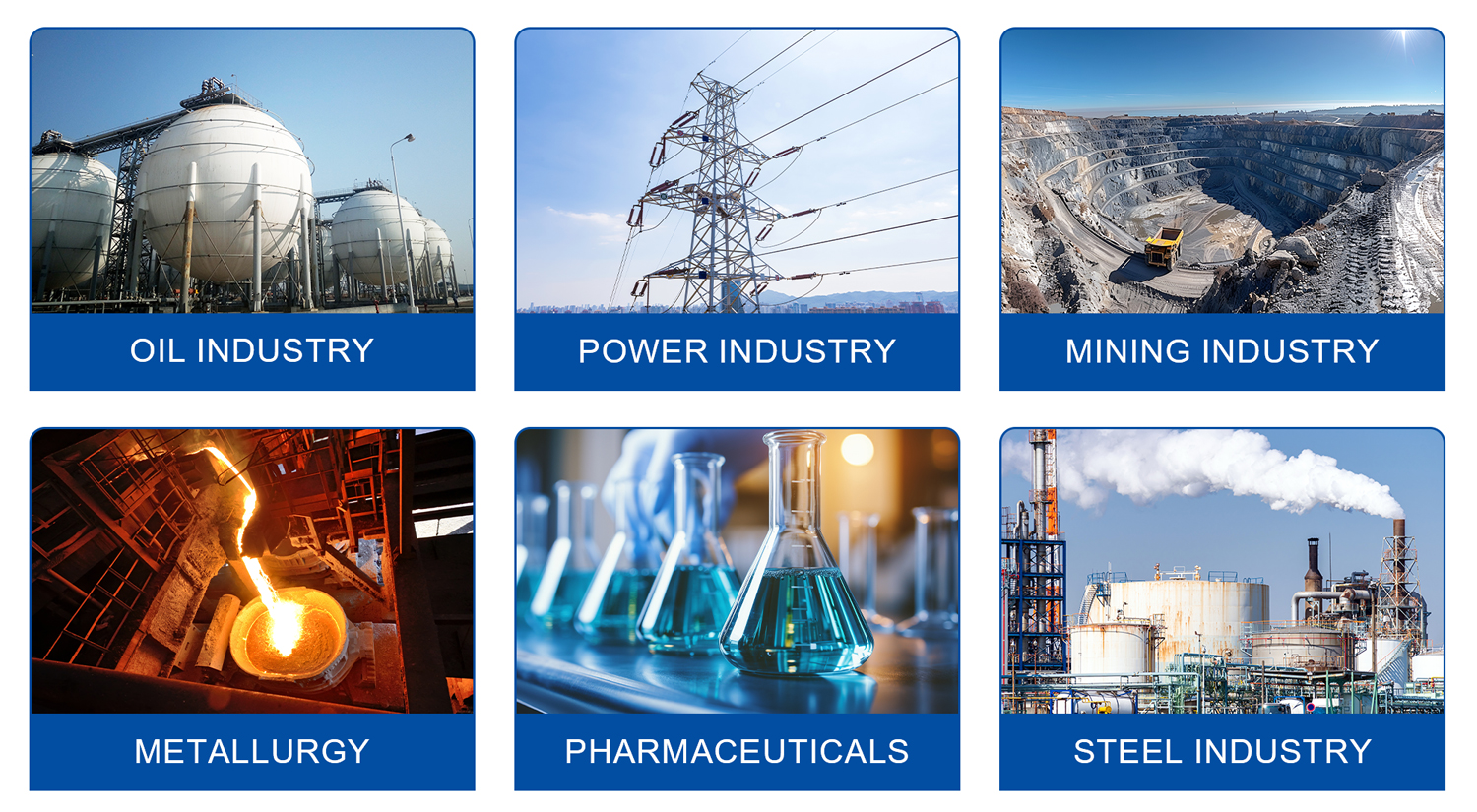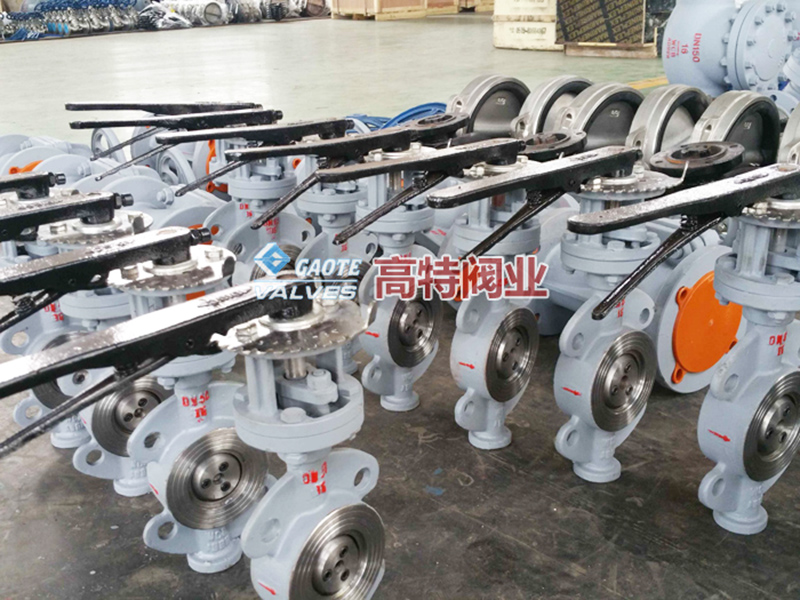Manual Butterfly Valve
Manual Butterfly Valve
Butterfly valves are widely used in fluid control systems and have the characteristics of simple structure, flexible operation, light weight and easy installation.


The butterfly valve is a common on-off valve, widely used in fluid control systems, with the characteristics of simple structure, flexible operation, light weight, and easy installation. It adjusts or cuts off the flow of fluid by rotating a butterfly-shaped valve disc. Butterfly valves are usually used to adjust the flow in pipelines, open and close, and control the flow of liquids, gases, and other media.
※ Basic Structure
Valve body: The outer shell of the butterfly valve, usually made of cast steel, cast iron or stainless steel, is responsible for supporting and protecting the various components of the valve.
Disc: The disc is the core part of the butterfly valve, usually round or butterfly-shaped, installed in the valve body and connected to the shaft. When the butterfly valve is operated, the disc rotates to open or close the flow channel.
Stem: The component that connects the disc to the operating device, usually made of stainless steel.
Sealing ring: Installed at the contact between the disc and the valve body to ensure that there is no leakage when the valve is closed. The material of the sealing ring can be selected according to the type of media, working environment, etc., such as rubber, polytetrafluoroethylene (PTFE), etc.
Drive device: It includes manual operation, pneumatic, electric or hydraulic drive methods. The drive device is used to rotate the valve stem, thereby driving the rotation of the disc to complete the switch operation.
※ Product Application
Water treatment: used in urban water supply, sewage treatment, pumping stations and other systems to control the flow and direction of water.
Petrochemical: used in oil and natural gas pipeline systems to regulate and control the flow of fluids.
HVAC system: used to regulate the flow of air or coolant in heating, ventilation and air conditioning systems.
Pharmaceutical and food industries: occasions where precise regulation of fluids is required to ensure that the fluids are not contaminated.
Power industry: butterfly valves also play an important regulatory role in the cooling system and steam delivery system of power plants.
※ Product Advantage
Simple structure
The butterfly valve has a simple structure, small size, light weight, and is easy to install and maintain.
Quick opening and closing
The butterfly valve can complete the opening and closing action within 90 degrees, with fast opening and closing speed and short response time.
Low cost
Compared with other types of valves, butterfly valves usually have lower manufacturing costs and are suitable for large-scale applications.
Wide range of applications
Butterfly valves are suitable for the control of various fluids (such as water, oil, gas, etc.) and can be used in a variety of media.
Space saving
The butterfly valve is small in size and takes up less space for installation, which is suitable for occasions with limited space.
Good flow regulation ability
The butterfly valve can accurately regulate the flow, especially when it is fully open or partially open.
High efficiency and low energy consumption
Due to its simple design, the butterfly valve requires less force to open and close, which can effectively reduce energy consumption.
※ FAQ
What are the installation requirements for control valves?
The valve should be installed at the appropriate position of the pipeline to ensure that the flow direction is consistent with the direction indicated by the valve body; secondly, check whether the valve and its accessories are intact before installation to ensure that there is no damage; during installation, ensure that the pipeline connection is stable to avoid stress concentration and prevent damage to the valve; in addition, sufficient space should be provided for the valve to facilitate adjustment, inspection and maintenance; finally, the valve should be protected from excessive vibration or temperature, especially under high pressure and high temperature environments.
What are the common applications of temperature and pressure reducers?
Temperature and pressure reducers are widely used in many fields. They are mainly used in steam systems to reduce high-pressure steam to appropriate pressure to ensure safe operation of equipment. They are commonly used in power, fertilizer, food processing and other industries. They are also used in oil and gas pipelines, chemical production, pharmaceutical plants, etc. to ensure stable pipeline pressure and avoid system overpressure or excessive temperature. In addition, reducers are also used in HVAC, metallurgy and other industries to adjust the temperature and pressure of the fluid in the system to ensure the smooth progress of the process.
How to maintain medium and high pressure valves?
When maintaining medium and high pressure valves, first check the wear of key components such as valve body, valve seat, sealing ring and valve stem regularly. Clean the valve to prevent impurities from blocking and affecting operation. Check the operating performance of the valve to ensure flexible opening and closing without sticking. Check the sealing to prevent leakage and replace the seals if necessary. For valves that operate at high pressure for a long time, it is recommended to perform functional tests regularly to ensure their reliability under high pressure environment. In addition, check the connection parts of the valve to avoid looseness or leakage caused by vibration or corrosion.
※ Industry Applications

※ Company Introduction
Jiangsu Gaote Valve Industry Co., Ltd. was established in 2003. The company is a medium-sized enterprise specializing in the production of various petrochemical and power station valve series. The main products include high-temperature and high-pressure power station valves, gate valves, stop valves, ball valves, check valves, butterfly valves, instrument valves, needle valves, regulating valves and non-standard special valves for power stations, etc. Hundreds of varieties and specifications of valves, products are widely used in power, petrochemical, metallurgy, pharmaceutical, mining, steel, mining, water supply and drainage and other industries. The company's R&D team actively explores the field of valves and explores a path of industrial upgrading from ordinary valves to valves.
Jiangsu Gaote Valve Industry Co., Ltd. is an innovative demonstration enterprise of small and medium-sized enterprises in Jiangsu Province. It is located in the Economic Development Zone of Funing County, Jiangsu Province, and National Highway 204 passes through the territory. The company has passed the ISO9001 quality system certification and the special equipment manufacturing license of the People's Republic of China. It is a member unit of the power station accessories supply of the State Power Corporation, a member unit of the Sinopec Equipment Resources Market, and a member unit of the first-level supply network of China National Petroleum Corporation. It has gradually established a good reputation in power station valves. The company has an advanced management mechanism, with fixed assets of more than 30 million yuan, more than 100 sets of sophisticated mechanical processing equipment and inspection and testing equipment, and more than 10 technical R&D personnel, forming an integrated production, sales and service.









